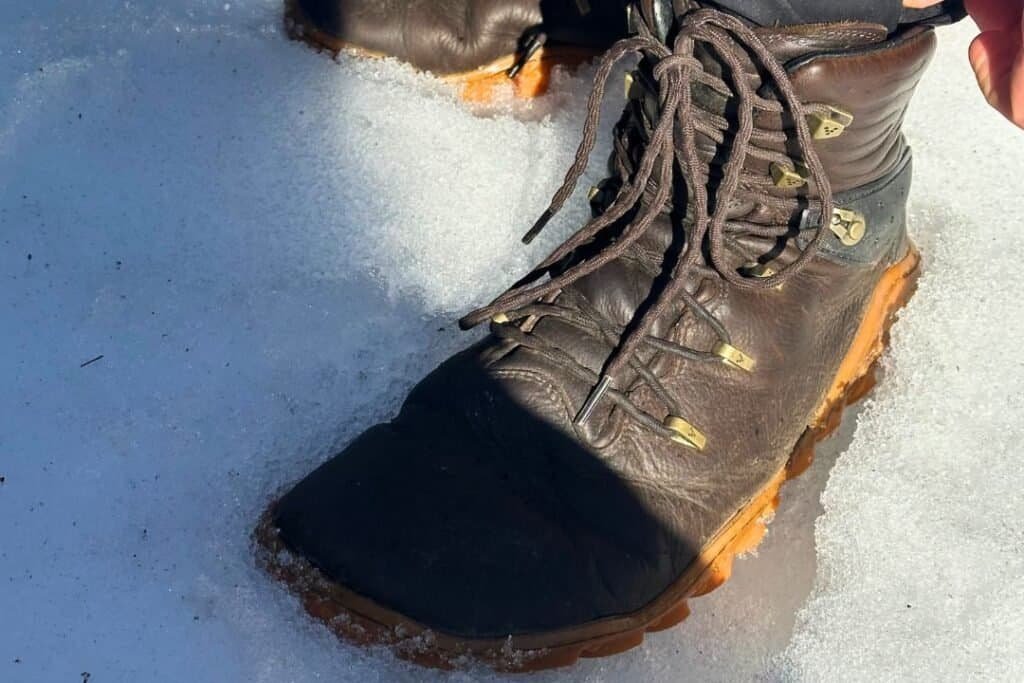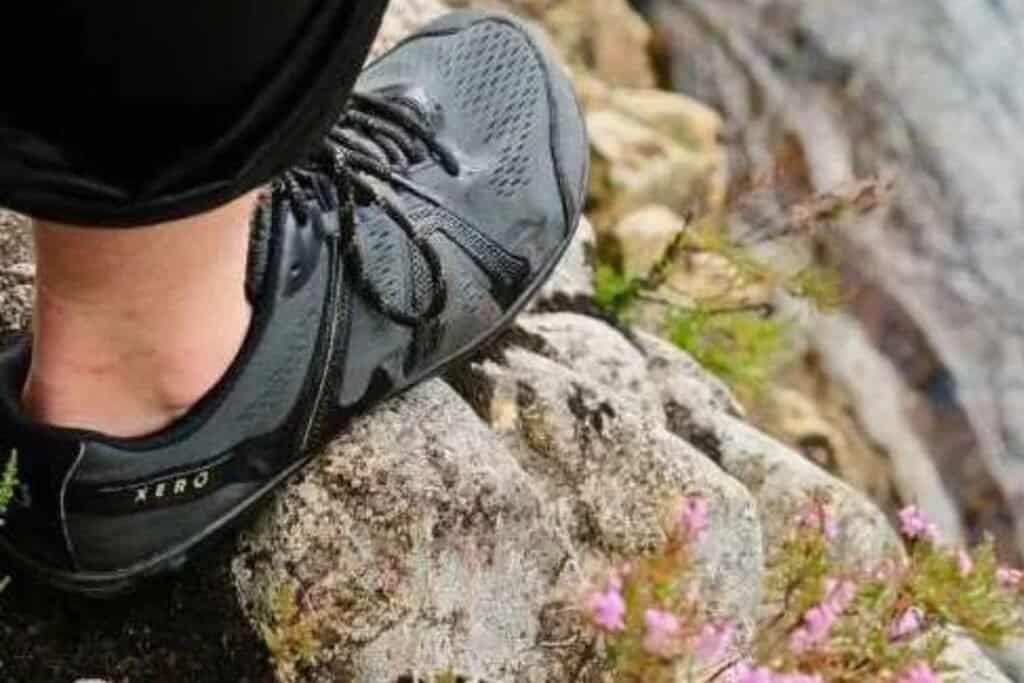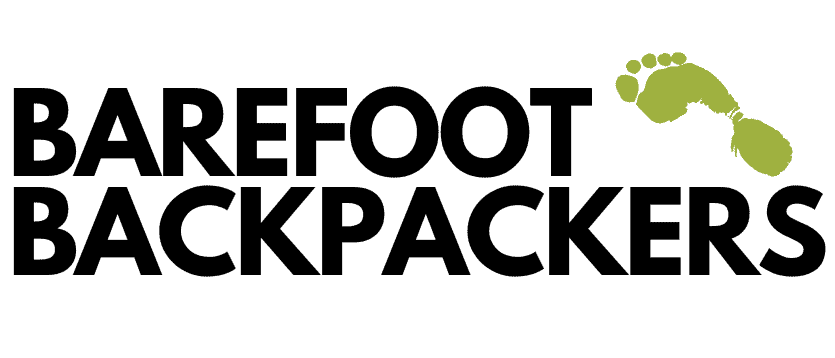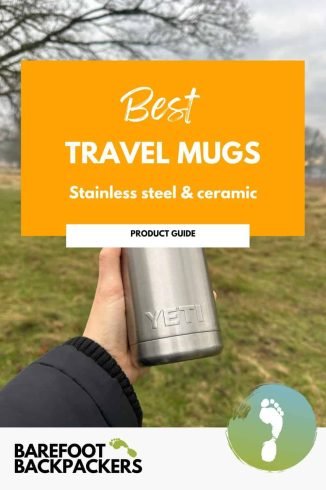The best hiking barefoot shoes are designed to provide natural movement, flexibility, and durability while keeping your feet protected on rugged trails. Unlike conventional hiking boots, barefoot designs encourage proper posture, strengthen foot muscles, and allow for a more grounded experience. Whether you’re trekking steep terrain, exploring forest paths, or navigating rivers and rocky ground, barefoot shoes deliver the balance of freedom and support your feet need.
Many hikers who transition from traditional footwear find that the best barefoot running shoes are also excellent for trail fitness, fast hikes, or lightweight trekking. These shoes tend to prioritize breathability, wide toe boxes, and zero-drop construction, making them equally suitable for running and hiking depending on terrain. Choosing between a barefoot hiking shoe and a barefoot running shoe often comes down to the level of grip, durability, and weather resistance you need.
Barefoot hiking shoes also allow you to better connect with the ground underfoot. The thin, flexible soles provide excellent feedback, helping you adjust to uneven terrain more naturally. Over time, this can lead to stronger arches, improved balance, and a greater sense of stability on rocky paths or slippery trails. With options ranging from rugged barefoot shoes for winter to ultralight barefoot sandals, you can tailor your footwear to match your preferred hiking style. So without further ado, let’s get into the Barefoot Backpacker’s top nine hiking barefoot shoes.

This blog is supported by the community. If you choose to purchase through our links, we may earn a small commission, which allows us to keep creating content. As an Amazon Associate, we earn from qualifying purchases. Learn more.
Best Barefoot Hiking Shoe for Men At a Glance
- Best Overall: Vivobarefoot Tracker Forest ESC
- Best Lightweight Barefoot Hiking Shoe: Vivobarefoot Primus Trail III All Weather
- Best Barefoot Trail Running Shoe: Xero Shoes Mesa Trail II
- Best Waterproof Barefoot Boot: Xero Shoes Xcursion Fusion
- Best Barefoot Hiking Sandal: Xero Shoes Z-Trail EV
- Best Barefoot Budget Option: SAGUARO Barefoot Shoes
- Best Design Options: Merrell Trail Glove 7
Hiking Barefoot Shoes
Built for rugged adventures, the Tracker Forest ESC is Vivobarefoot’s toughest barefoot hiking boot. Designed with a Michelin® outsole, it grips confidently across technical terrain, from muddy forest floors to slick rock. The boot is water-resistant, using non-absorbent materials that help keep feet dry without compromising flexibility.
Inside, the Ortholite insole made from 98% recycled foam reduces waste while maintaining comfort. At 525g per shoe (EU 42), it’s sturdier than most barefoot options but still far lighter than traditional boots. If you’re tackling wild trails and need grip and protection without sacrificing barefoot principles, this is the shoe to beat.
Key specs
Weight 525g (men’s EU 42)
Sole Michelin® Outdoor ESC outsole
Upper Water-resistant materials
Insole Ortholite Performance, 98% recycled PU foam
The Tracker Textile AT brings Vivobarefoot’s most sustainable design to the trail. It’s built from fully recycled, animal-free materials, including a waterproof textile upper and a high-performance All Terrain sole made to handle mud, rock, and snow. The boot’s durable construction feels protective yet flexible, with a removable thermal insole for year-round comfort.
Every element reflects mindful craftsmanship, from the reinforced lacing system to the eco-friendly adhesives and linings. Breathable, waterproof, and surprisingly warm, it’s one of the best vegan barefoot boots available. Ideal for eco-conscious adventurers who want high performance without compromise.
Key specs
Weight approximately 465g per shoe
Upper Recycled textile with waterproof membrane
Outsole All Terrain rubber with deep lugs
Insole Removable thermal insole
The Primus Trail III All Weather is a stripped-back barefoot shoe built for speed and agility. Designed with a Firm Ground sole, it balances grip and ground feel on hardpack terrain, making it perfect for fast hikes, trail runs, and even rainy urban adventures. A quick-lace system allows for easy adjustments, while the lightweight build (315g per shoe, EU 42) ensures it won’t slow you down.
Made from recycled, vegan-friendly materials, the Primus Trail III AW is water-resistant yet breathable, ideal for cooler, wetter climates. It’s an all-rounder for those who want a flexible and responsive shoe that still holds up in challenging conditions.
Key specs
Weight 315g (men’s EU 42)
Sole Firm Ground outsole
Upper Water-resistant recycled synthetic materials
Lacing Quick-lace system
The Mesa Trail II is a versatile barefoot shoe designed for both trail running and hiking. It features a zero-drop platform, wide toe box, and flexible sole to encourage natural foot splay and posture. The breathable mesh upper and welded overlays provide support while keeping the shoe lightweight.
Backed by Xero’s 5,000-mile sole guarantee, the Mesa Trail II is built to last. Dual chevron lugs deliver excellent traction on dirt paths and rocky trails, making this one of the best hybrids for runners who also hike.
Key specs
Weight 7.6 oz (men’s 9)
Sole FeelTrue® rubber with dual chevron lugs
Upper Breathable mesh with welded overlays
Drop Zero-drop sole
For those who want waterproof protection without losing natural movement, the Xcursion Fusion is a game-changer. Its 10mm FeelTrue® sole with TrailFoam layer provides rugged grip and comfort, while the seam-sealed inner bootie and water-resistant membrane keep feet dry. At just 13.7 oz per shoe, it’s impressively light for a hiking boot.
The wide toe box, zero-drop heel, and flexible sole maintain barefoot principles while delivering durability and protection. Whether backpacking, camping, or trekking through wet trails, the Xcursion Fusion offers the right balance of freedom and security.
Key specs
Weight 13.7 oz (men’s 9)
Sole 10mm FeelTrue® sole with 3.5mm lugs
Upper Welded synthetic with seam-sealed bootie
Waterproof
Designed for agile movement on soft, uneven ground, the Magna Lite WR SG is the lightest boot in Vivobarefoot’s adventure range. Its weather-resistant recycled upper keeps moisture out while allowing airflow, making it ideal for transitional seasons. The soft-ground outsole uses multi-directional lugs for confident grip, while the flexible structure allows your feet to move naturally with every step.
The boot’s thermal insole helps regulate temperature, preventing cold toes in damp environments and overheating on warmer climbs. Its minimalist profile feels closer to a trail shoe than a heavy-duty boot , perfect for fast hikes, travel, or anyone who prefers an unrestrictive fit. The Magna Lite WR SG embodies barefoot design at its most technical: protective, breathable, and ready to move.
Key specs
Upper Recycled PET fabric, water-resistant
Outsole Rubber soft-ground tread
Insole Thermal insole with temperature regulation
Fit Wide toe box, flexible construction
Best for Lightweight hiking and variable terrain
The Z-Trail EV is an ultralight barefoot sandal designed for adventure. With a wide toe box, zero-drop sole, and flexible design, it encourages natural movement while offering protection through its dual-chevron lug sole. Quick-drying rPET recycled webbing makes it water-ready, perfect for river crossings or summer hikes.
Despite weighing just 5.4 oz per sandal (men’s 9), it’s backed by Xero’s 5,000-mile sole guarantee, ensuring long-lasting durability. The Z-Trail EV is the go-to choice for hikers who want barefoot freedom in the lightest possible package.
Key specs
Weight 5.4 oz (men’s 9)
Sole FeelLite® sole with dual chevron lugs
Upper Quick-dry recycled webbing
Drop Zero-drop sole
The Saguaro barefoot shoes deliver impressive barefoot performance at an affordable price. With a wide toe box, zero-drop sole, and breathable fabric upper, they allow toes to spread naturally while keeping feet cool. The foldable design makes them easy to pack and carry for travel or outdoor adventures.
Durable rubber outsoles provide reliable grip, whether hiking, training, or walking. Lightweight and versatile, these shoes are a great entry point into barefoot hiking without a premium price tag.
Key specs
Weight 8.1 oz (men’s 9)
Sole Rubber outsole
Upper Breathable synthetic fabric
Drop Zero-drop sole
Merrell’s Trail Glove 7 continues the brand’s leadership in barefoot design. It uses a Vibram EcoStep outsole that wraps the foot for natural grip and connection, alongside a minimal midsole with FLEXconnect grooves for enhanced ground feel. The breathable mesh upper is made from 100% recycled materials, keeping it eco-friendly.
At its core, the Trail Glove 7 promotes natural foot positioning and barefoot biomechanics. With its balance of grip, comfort, and flexibility, it’s one of the best minimalist sneakers for both trail use and everyday wear.
Key specs
Weight 8.9 oz (men’s 9)
Sole Vibram EcoStep rubber outsole
Upper 100% recycled breathable mesh
Drop Zero-drop sole
What is the Difference Between a Hiking Shoe and a Barefoot Hiking Shoe
Traditional hiking shoes typically have thick midsoles, arch support, and cushioning that change the way your foot interacts with the ground. By contrast, barefoot hiking shoes have a zero-drop heel, thin, flexible soles, and wide toe boxes that allow natural splay. This encourages proper foot strike and reduces artificial foot drop, leading to a more natural gait.
Barefoot designs prioritize ground feel and proprioception, allowing your muscles, tendons, and ligaments to strengthen over time. While traditional shoes cushion the terrain, barefoot hiking shoes let you adapt to it, improving balance and stability.

What is the Difference Between a Barefoot Hiking Shoe and a Barefoot Trail Running Shoe
Though they share the same minimalist philosophy, barefoot hiking shoes and barefoot trail running shoes serve slightly different purposes. Barefoot hiking shoes often feature tougher outsoles, water resistance, and protective overlays to handle extended wear on rugged terrain.
Barefoot trail running shoes, meanwhile, prioritize lightweight performance, speed, and breathability. They often have thinner soles for maximum ground feel, but may not be as durable for heavy backpacking or steep mountain trails. Choosing between them depends on whether your focus is endurance hiking or fast-paced trail fitness.
What to Consider When Choosing a Barefoot Hiking Shoe
When selecting barefoot hiking shoes, consider the sole material and grip first. Rubber compounds with multi-directional lugs are best for rugged trails, while thinner, flexible soles are more suitable for light treks. Look for zero-drop construction and a wide toe box to encourage natural posture and toe splay.
Materials also play a key role. Waterproof membranes are useful in wet environments, while breathable mesh works better in dry or hot climates. For summer hikes, barefoot sandals for hiking can provide excellent ventilation and freedom while still offering traction and ground feel. Ultimately, the right pair should balance durability, comfort, and flexibility for your hiking style.
FAQs:
Are barefoot hiking shoes good for long hikes?
Yes, barefoot hiking shoes can be used for long hikes, but it’s important to transition gradually if you are new to minimalist footwear. Over time, your feet and legs will strengthen, making them more comfortable for extended treks.
Can barefoot sandals be used for hiking?
Barefoot sandals for hiking are a great option for warm climates and light trails. They allow maximum breathability and natural movement, though they may not provide the same protection as closed hiking shoes on rocky or technical terrain.
How long do barefoot hiking shoes last?
Durability depends on the brand and materials, but many barefoot shoe companies offer guarantees, such as Xero’s 5,000-mile sole warranty. With proper use, barefoot hiking shoes can last several years.
Can I use barefoot running shoes for hiking?
Yes, many barefoot running shoes also work for hiking, especially on lighter trails. However, for rough or wet conditions, barefoot hiking shoes with tougher outsoles and water resistance are usually better.
Enjoyed our guide? Read more
Best Barefoot Shoes for Women
7 Best Barefoot Sandals for Men 2025
Best Barefoot Shoe Leather Options in 2025

















